
Practicing as a Manual/Massage Therapist is a very interesting and fulfilling career in many ways. Most Therapists are comfortable treating from an orthopedic perspective, testing and assessing functionality of patients and determining a course of treatment and rehabilitation is common place. We help patients from all walks of life; young, less young, inactive, more active, weekend warrior, elite athlete, disabled, those challenged with pain and discomfort and so on.
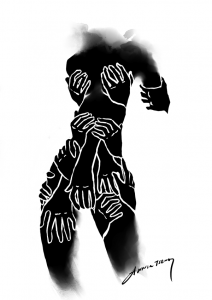 Although this article will be a departure from the typical orthopedic perspective you may be used to reading, it discusses people living with a type of injury you unknowingly see regularly in your practice. You yourself, may be living with this injury. I won’t be discussing any particular treatment techniques or strategies to use in treatment but will offer my professional perspective from practicing over the past 25yrs treating patients suffering from this injury.
Although this article will be a departure from the typical orthopedic perspective you may be used to reading, it discusses people living with a type of injury you unknowingly see regularly in your practice. You yourself, may be living with this injury. I won’t be discussing any particular treatment techniques or strategies to use in treatment but will offer my professional perspective from practicing over the past 25yrs treating patients suffering from this injury.
The person living with this injury is not typically discussed in massage therapy school curriculums nor is it discussed much if at all in other forms of Manual Therapy curriculums globally. The person seeking treatment at your office is typically female (1 in 4 women, 1 in 17 men) over 15yrs old, acquired this injury by someone (male or female) they knew/know intimately or by a stranger (10-25%) while in their own house (40-55%). The event causing the injury may have happened once, it may have been or is currently recurring. 9 out of 10 times the person suffering with this injury most likely has not told anyone about it.
It’s important for us as Therapists to be knowledgeable about assault/violence and the various forms it occurs. This subject matter is extensive. For this article, we will take a very brief look at the information on assault and discuss how this knowledge can influence your practice.
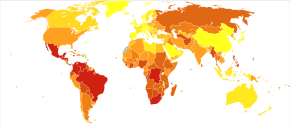 Globally the statistics are similar for most countries that have reported. Some countries have higher incidences, some have lower, while for other countries the research just doesn’t exist. Remember, this is a subject that most are unwilling to come forward to talk about. According to World Health Organization (WHO), sexual violence remains highly stigmatized in all settings. Even when studies take great care to address the sensitivity of the topic, it is likely that the levels of disclosure will be influenced by respondents’ perceptions about the level of stigma associated with any disclosure, and the perceived repercussions of others knowing about this violence.
Globally the statistics are similar for most countries that have reported. Some countries have higher incidences, some have lower, while for other countries the research just doesn’t exist. Remember, this is a subject that most are unwilling to come forward to talk about. According to World Health Organization (WHO), sexual violence remains highly stigmatized in all settings. Even when studies take great care to address the sensitivity of the topic, it is likely that the levels of disclosure will be influenced by respondents’ perceptions about the level of stigma associated with any disclosure, and the perceived repercussions of others knowing about this violence.
Violence can be classified into the following:
• current and previous partner violence and emotional abuse since the age of 15
• stalking since the age of 15
• physical and sexual abuse before the age of 15
• witnessing violence between a parent and partner before the age of 15
• lifetime experience of sexual harassment
• general feelings of safety
Assault occurs in many forms, locations and is committed by both sexes on each sex. The following stats pertain to people age 15 and older. More than 1 in 3 experienced violence by a male compared to 1 in 10 by a female. Approximately 1 in 4 women experienced violence by an intimate partner, compared to 1 in 13 men. More than 1 in 4 men experienced violence by a stranger, compared to 1 in 11 women. Men are more likely to be physically assaulted by a male stranger at a place of entertainment or recreation while women are more likely to be physically assaulted by a male they know.
According to The National Center for Victims of Crime, 1 in 5 girls and 1 in 20 boys is a victim if child sexual abuse. Further, each year in the U.S. 321,500 Americans ages 12 older are sexually assaulted or raped, according to the Rape, Abuse and Incest National Network
 Some positive change, but not much…
Some positive change, but not much…
From 2005 to 2016, the proportion of men experiencing physical violence has almost halved, decreasing from 10% in 2005 to 5.4% in 2016. For women, the proportion has fallen from 4.7% in 2005 to 3.5% in 2016.
The proportion of women experiencing sexual violence has remained steady between 2005 and 2016 (1.6% in 2005 compared to 1.8% in 2016).
The proportion of men who experienced partner violence increased between 0.4% in 2005 and 0.8% in 2016. The proportion of women who experienced partner violence has remained relatively stable between 1.5% in 2005 and 1.7% in 2016.
What does management if this injury look like from a Manual Therapy clinical perspective?
For the purpose of this article I will refer to persons seeking treatment at your office as patients. Some Therapists prefer other terms such as clients while some do not use any term other than the person’s name to identify them. Please feel free to use whatever descriptive term you are most comfortable with.
Remember, we are not only Therapists but also patients. Always consider how you as a patient would feel during in an appointment with you as a Therapist. It is important to remember that patients’ have a level of expectation from you as a Therapist, from the treatment and of the environment that treatment is given in.
 Standards of Practice governing Manual Therapists differ globally. It’s best that you inform yourself of those standards that apply to you. Standards of Practice define the basic level of expected treatment from Therapists and the safe, ethical, and competent delivery of care. When discussing Standards of Practice, we are primarily concerned with creating boundaries and obtaining informed consent to practice.
Standards of Practice governing Manual Therapists differ globally. It’s best that you inform yourself of those standards that apply to you. Standards of Practice define the basic level of expected treatment from Therapists and the safe, ethical, and competent delivery of care. When discussing Standards of Practice, we are primarily concerned with creating boundaries and obtaining informed consent to practice.
Boundaries
Sexual trauma is a severe boundary violation. An important part of recovery and healing is the re-establishing what healthy connection and boundaries look and feel like.
The therapeutic relationship that exists between a health professional and a patient is
inherently unbalanced in terms of power. In the 1996 article “Power Imbalances and Therapy” Karla Kennedy Boyde, PhD informs us that within a functional therapeutic relationship, patients invest Therapists with power and Therapists use their privilege and power to help patients empower themselves. Therapy is impeded when the Therapist fails to consider societal power dynamics, such as race, age, gender, religion, sexual orientation, ethnicity, cultural beliefs, ability, values, lifestyle and perception of dominant cultures. If the Therapist fails to acknowledge and explore the power dynamics within the therapeutic relationship, there is potential for devaluation of the patients’ personal values and perceptions. It is the responsibility of the health professional to recognize and manage this power imbalance in order to provide patient-centered, safe, ethical, competent, and effective care.
Establishing both psychologic and physical boundaries, informs patients of what to expect when seeking care from you. Although Massage/Manual therapy is a physical form of treatment, we know that it not only affects the patients physical body, but that it also affects the patient psychologically and emotionally. Communicating and forming clear boundaries ensures professional and respectful patient safety, comfort and dignity.
If your practice is like mine, we serve a diverse community rich with individual and cultural differences. Each patient presents with their own cultural and individual levels of comfort with touch and physical contact. Assault is not isolated to any one sex, culture or country. As such, it’s important to understand that each patient has their own personal sexualized/sensitive areas of their body. Communicating with the patient about their personal areas, helps to establish boundaries minimizing the occurrence of unintentional or incidental physical contact with those established areas.
As much as we try to empathize or understand a patient, we can never truly know what a patient is experiencing physically, psychologically or emotionally. It’s important during treatment to regularly communicate and reaffirm that you are working within your patients’ level of comfort. Be aware of the patient’s non-verbal communication for signs of discomfort such as increasing muscle tension or tone, physically shifting or attempting to move away from your touch and verbal communication from them saying that what you are doing is uncomfortable and/or unwanted.
We all have patients that we have been providing treatment to for many years. I have many patients that I’ve provided treatment to over the past 25yrs. I knew them when they were single, just dating, getting married, during rearing of all 4 of their children. In some cases, I now I treat the children and their spouses. The therapeutic relationship can become blurred over time and a relaxed aspect is felt by both parties. Be mindful that the comfort felt is based on years of professional trust established as part of the therapeutic relationship, not as a close personal friendship.
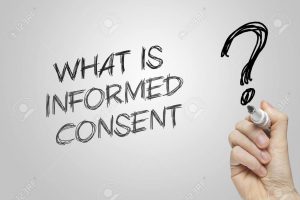
Informed Consent
A fundamental requirement of treatment with any patient is obtaining Informed Consent. Informing patients and involving them in decisions about their treatment is essential in providing professional care. Obtaining consent is not just a one-time occurrence that happens at the beginning of an appointment. It is part of an ongoing functional therapeutic relationship based on creating equality and minimizing any power imbalances. Continual communication and confirmation of consent during each treatment ensures that consent is informed and voluntary.
Informed Consent involves providing the patient with sufficient information about the proposed treatment enabling them to decide if they would like to continue with treatment.
The following are important parts to obtaining Informed Consent:
engage in shared decision-making with the patient
respecting the patient’s autonomy
obtain consent prior to delivery of treatment (including assessment, treatment and re-assessment)
addresses the patient’s goal(s) and expectation(s) in seeking treatment
monitoring and renewing consent where appropriate throughout treatment
discontinue treatment if the patient withdraws consent at any time
 describing the proposed treatment including:
describing the proposed treatment including:
initial intake of the patient
a treatment plan
assessment
massage therapy during a first session
massage therapy during a subsequent session, and/or
home care
providing information about:
areas of the patient’s body where treatment will be delivered
the anticipated benefits and possible negative effects of the treatment
the therapeutic rationale for the proposed treatment
options for disrobing
options for draping during treatment
In some cases, you may need to acquire consent from a person considered by law to be a minor/infant. Minor /infant describes a person under the legal age in your part of the world. In Canada, the legal age is 19. Remember that physical and sexual abuse can occur before the age of 15. It is your responsibility as a health care professional to inform yourself of the legal requirements pertaining to consent for providing treatment to a minor.
Depending on where you practice, you may be required by law to obtain written informed consent. This may be only required at the initial appointment, whenever the treatment plan changes, or it may be required before every appointment.
 What’s Your Role?
What’s Your Role?
Today more than ever, Manual Therapists treat from a Biopsychosocial perspective, recognizing how psychological, emotional and physical dysfunctions and conditions effect the overall lifestyle of a person. Although we all have the innate desire to help someone, you must remember, it is not your role to help the patient emotionally or psychologically. Some Manual Therapists may have received some training on the topic of counselling but this most likely from an emotional awareness point of view. We need to approach these topics carefully, acknowledging we are not counselors/psychologists/psychiatrists nor do we receive appropriate education for the treatment of mental health issues or conditions and that we have limits.
You must have a mental health professional to refer to as part of your regular referral network. You must be aware of your legal responsibilities mandated by your regulatory body. When you are aware that your patient may need assistance managing a mental health issue, refer the patient back to their Medical Doctor.
 Communication Suggestions
Communication Suggestions
So, what do you say after a patient communicates to you that they are a survivor of abuse/violence? When a patient confides in you, it’s important to pause for a brief moment before you instinctually respond. According to the Journal of General Internal Medicine, Physicians interrupt patients within 11 seconds after the patient started speaking. Taking pause as a Health Care Provider and fellow human-being provides you the time to remember to respond from a place of empathy rather than sympathy.
How we present ourselves to our patients influences our outcomes and their mental, emotional state. Trust, respect, comfortability of the environment and of the relationship create an opportunity where a patient feels safe. It’s important to remain neutral. Hearing our patients’ stories pulls at out emotional strings. You may find yourself getting lost in your own feelings and perspectives and creating fictional events in your own mind based on what you’ve been told. You may feel agitated, outraged, judgmental, angry, shame and guilt. It’s a challenge that we must contain our own emotional response and stay neutral, being a compassionate observer.
Recognize that it’s respectful to communicate in a way that is appropriate to the patient’s level of understanding, considering factors such as the patient’s age, language and cultural background. It’s easy to hurt other people and not even notice it. Words are powerful and have different meaning to different people. Sometimes, we say words to other people that don’t mean much to us… just to avoid an awkward silence… just to say… something.
Although your instinct may be to respond with a sympathetic “I’m sorry,” avoid saying this or something similar. You as a Health Care Provider have done nothing to the patient that requires an apology. A more appropriate and respectful response would be “Thank you for sharing with me” or “I appreciate that you shared with me.” There is no awkward silence, nor any sense of pity. Acknowledge their story, then ask “How can I help you?” This response is more authentic and encourages an actionable outcome.
 Listening can be challenging. As Therapists, we are educated to assess and treat with a possible solution. Therapists of all kinds forget or do not recognize that listening and gentle acknowledgment is what our patients need most, not a solution.
Listening can be challenging. As Therapists, we are educated to assess and treat with a possible solution. Therapists of all kinds forget or do not recognize that listening and gentle acknowledgment is what our patients need most, not a solution.
Being heard is powerful. Be conscious of the chasm between what we believe a patient may be feeling and their true feelings. Avoid attempting to validate what you think the patients’ feelings are or guessing what they are feeling. Terminology is very individualistic. Let the patient label their feelings and use their words.
If you don’t understand something the patient has communicated, rather than telling them what you think it sounds like, stop and ask them what they mean. Ask them for clarification. People appreciate not having someone guess at what they feel. They appreciate being understood.
Massage/Manual Therapists have a unique experience with patients compared to other medical professionals. We can spend up to an hour or more alone with a patient, communicating with them verbally and non-verbally. As the professional relationship develops over time, both Therapist and patient become comfortable with one another.
 Vulnerability and Trust
Vulnerability and Trust
Many of us remember growing up learning “Stranger/Danger!” The main threat with which stranger/danger campaigns were started was the concerned of sexual abuse. The campaign continues today with the hope to solidify the idea or warning that all strangers can potentially be dangerous. It is an example of a moral panic that people experience regarding anyone that they are unfamiliar with in society.
Every new patient we see has a certain level of expectation of what they think they are about to experience. This expectation may come from another of your patients experiences with you, from experiencing treatment from other therapists of the same or different professions, from discussions the patient has had with friends/family/acquaintances, and from what they’ve seen on TV or in the movies etc.
Charles Feltman defines “Trust” as choosing to make something important to you vulnerable to the actions of someone else. As Therapists, it is very easy for us to forget that the person in front of us, who doesn’t know us, is about to place a huge amount of trust in us while placing themselves in a position that is most vulnerable. Trust is an important aspect of any treatment. It’s one of the strongest influencing factors in your therapeutic relationships.
Brene Brown defines “Vulnerability” as the feeling we get when we feel uncertainty, at risk or emotionally exposed. One of the life lessons we learn is that courage is an important value. We are encouraged to be brave in anything we attempt, but in the same breath we are also taught that vulnerability is a sign of weakness. On one hand, we are taught to be brave, but on the other hand we are taught to never expose ourselves. The reality is that there is no courage without vulnerability.
The person in front of you is taking a very large courageous step just showing up to their first appointment. Trust is built not in huge defining moments, but over time with very small moments. Therapists typically reflect on different techniques or strategies they can utilize to treat an orthopaedic dysfunction. It’s time to recognize that it is equally important to reflect on how your verbal and non-verbal communications and interactions influence the building of trust within the therapeutic relationship.
 On Those Bad Days…
On Those Bad Days…
Everyone is dealing with their own life challenges in the best ways they know how. Many patients with this injury are managing with some level of Post-Traumatic Stress (PTS) as best they can. Some days are worse than others. On these days, a patient can present feeling various levels and mixtures of anger, grief, guilt, sadness amongst others. PTS moments can and will occur during treatment. When a PTS or similar moment occur, it’s important to recognize and realize what the person in front of you has/is going through.
If they express anger towards you, don’t take it personally or as a sign of disrespect. Be concerned and caring. This is where listening skills, empathy and understanding will be best utilized. Recognize that you as a Health Professional have done nothing wrong and that today may or may not be a good day for treatment. Ultimately the patient must be made aware that it is their choice if they want to continue with the appointment and that at any time during the appointment, they can stop the appointment.
If the decision is made to stop treatment it’s important to ensure that the patient is capable of leaving your office feeling safe and that they have somewhere safe to go to. In many cases, I’ve requested who the patients’ main “In Case of Emergency (I.C.E.)” is and requested permission to contact them. Remember your confidentiality when speaking about your patient. If given permission, I make the phone call while the patient is still with me.
 Other Considerations
Other Considerations
Are there any areas of the body that should be avoided?
As discussed earlier in this article, an aspect of treatment with any patient is obtaining consent which involves confirming boundaries both legal (defined by your regulatory body) and areas that the patient has deemed off limits. One of our greatest strengths as Manual Therapists is that we are skilled in treating with clothing on or off. There are many techniques that never require the patient to remove much if any clothing. A very common comment I receive from patients is “I never realized I could receive a Massage Treatment without ever taking my clothes off!”
Once treatment boundaries are established, part of gaining Informed Consent is having both parties agree on how accessing certain body areas within the boundaries will happen. Typically, only undraping the area of the patient’s body where treatment is delivered is required. Many times during treatment, other areas are determined to require treatment. When this occurs, revisiting the discussion on boundaries and consent to treat strengthens trust and minimizes the power imbalances of the therapeutic relationship.
 Which topics of conversation should be avoided?
Which topics of conversation should be avoided?
Personally, I have a few topics that are off limits for conversations with all patients. These include but are not limited to religion, politics, right to life, gender topics, ethnicity/race, conspiracy theories etc. I also avoid offering or giving advice when asked “What would you do?” or “What do you think I should do?” How to handle questions such as this will be discussed in an upcoming article on “Motivational Interviewing.”
It’s professional for you to say that as a health care professional, its outside your scope of practice to offer advice and that you don’t have the professional training to help in this area. Then make the appropriate referral either back to the patients’ Medical Doctor or onto a clinical counselor or the like.
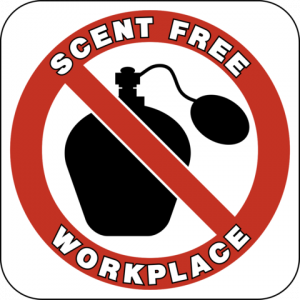 Do you use any scents in practice?
Do you use any scents in practice?
Generally, I have a scent free environment. The connection of scent to memory strong and you never know what experience or memory a certain sent will trigger in any of your patients. I also as best as possible avoid strong food scents for the same reason. Save the fragrant herb and spice foods for home.
What do you do about noises in the treatment room?
 Sometimes you can control the noise environment and sometimes you can’t. Outside world sounds such as traffic can be difficult to block out. In office sounds such as voices that travel from one treatment room can be challenging to control. With my assault patients who have great sensitivities to sounds, I do my best to schedule them at a time of day when the clinic tends to be quieter.
Sometimes you can control the noise environment and sometimes you can’t. Outside world sounds such as traffic can be difficult to block out. In office sounds such as voices that travel from one treatment room can be challenging to control. With my assault patients who have great sensitivities to sounds, I do my best to schedule them at a time of day when the clinic tends to be quieter.
 What music if any do you play during treatment?
What music if any do you play during treatment?
As with smells, music has strong memory and emotional connections. With all patients’ I typically avoid any mainstream music from any decade or genres. Generally, I play original instrumental music unless the patient requests certain music. One patient likes heavy metal music, so we listen to lots of Alice in Chains, Metallica, Ozzy Osbourne, Soundgarden etc. Some patients prefer to have complete silence. I meet patients’ where they are at on that day and work with them.
Does Gender of the Therapist play a role in treatment?
As much as we would love to live in a utopian world where all things were equal, this is not the case. You never know why someone feels more comfortable with one sex over the other. To be honest, it doesn’t really matter to me. All I’m concerned with is that the person who is suffering, is receiving treatment from someone whom they trust and believe is the best fit for them in that moment.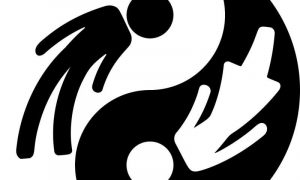
True story:
About 15yrs ago, I provided 12 treatments to a female assault patient. On the 13th visit she revealed to me that I was the only male in her group of medical professionals that she was currently receiving treatment from. Even her Veterinarian was female. She asked if she could switch to one of the female Therapists in the office since a majority of the issues she had originally reported were feeling much better. She confided in me that she never really felt comfortable with a male Therapist. As I had been highly recommended to her and as she recognized that major positive changes were being made, she hadn’t wanted to slow the progress of positive change that was being made. In that moment, I felt completely saddened. I knew that if she had felt completely safe and comfortable, that the positive treatment outcomes could have been dramatically far more beneficial and potentially gained in less time. Changing to the female therapist quickly amplified her outcomes and shortly thereafter, she no longer required help.
Never be offended by a patient who has a preference for whom (male or female) they wish to receive treatment from. They’re advocating for themselves and getting help. That’s all that matters.
 Put Yourself First
Put Yourself First
In order to best help those around you, you must put yourself first. Self-care is a part of our profession that typically focusses on our physical abilities to provide treatment. How not to get tendinopathies, how to have better posture and biomechanics and so on are widely written about. Health care providers need to focus more on learning how to achieve/manage better mental health.
Everyone (including you) is just trying to get through the day the best they can with the challenges they are experiencing. When patients confide in you, it can seem overwhelming. Adding this information to what you are already managing in your life, can slowly pick away at your coping strategies.
Psychology and physiology are intimately linked. When you need help and don’t give yourself a break, your body goes into survival mode, your cortisol levels increase, exacerbating your stress. You can start to feel worn down, need a holiday, feel exhausted and you may even start to lose the joy you have for helping others. Distancing yourself is an instinctual coping strategy, that may work short term, but long term is noticeable by your family, friends and by your patients.
This means pulling in reinforcements from parts of our brain reserved for things like love, connection and contentment. When you overextend one part of you, everything (and everyone) suffers.
If you are unable to cope physically, mentally and socially with the challenges we all face in daily practice, it’s vitally important that you ask for help. It’s a sign of strength to ask for help so that you may continue to help others.
 Why should massage Therapists embrace the opportunity to work with victims of sexual assault?
Why should massage Therapists embrace the opportunity to work with victims of sexual assault?
This is not an easy question to answer. It’s really no different than asking why a therapist prefers to work with athletes, elderly, pediatrics, orthopedics, cancer/oncology, central/peripheral nervous system injuries and so on.
Many therapists’ professional interests are varied and tend to shift over their career. It’s a constant process of reflecting on what your practice is about. Ask yourself; who do you want to serve, what do you want to give to the world, what do you want to stand for, what do you find meaningful, what are you passionate about, what brings you joy? Sometimes it’s just about looking at who is “NOT” being served by your profession and recognizing the impact that can be made in their life.
If you make the decision to work with victims of abuse, it’s important to educate yourself first. It’s important to set up your own sources for treatment. Focusing your practice in this area is challenging. As discussed earlier, you must put yourself first in order to continue to help others.
Become knowledgeable on the facts around abuse and the benefits of manual therapy. Contact and connect with other medical professionals in your area that focus on treatment of assault. These relationships are vital to providing a multi-dimensional treatment approach to provide comprehensive care.
Today there is an ever-growing population of people seeking massage therapy in order to recover from traumatic body memories and reclaim the capacity to receive nurturing touch. People who have experienced abuse, suffer greater psychological distress, physical symptoms, experience interpersonal and sexual problems, PTSD, and dissociation compared to those who have never experienced abuse. They often experience the loss of feeling safe, the loss of caring relationships with others, and the loss of an internal sense of wholeness. An important part of recovery is reclaiming and reconnecting the physical, psychological and emotional aspects, reducing dissociation and physical symptoms, improving quality of life.
Massage therapy allows people to experience positive, non-violent touch in a therapeutic environment. Research has documented that Massage has been shown to help people experience a somatic release of trauma, increased self-awareness, feel an increased mind/body/spirit connection, decreased depressed mood, decreased anxiety, decreases cortisol levels and provides feelings of safety and control.
References:
www.helpguide.org/articles/ptsd-trauma/recovering-from-rape-and-sexual-trauma.htm
www.amtamassage.org/articles/3/MTJ/detail/3484/in-safe-hands-massage-ptsd
www.cmtbc.ca/law-standards/standards-of-practice/
www.cmtbc.ca/law-standards/standards-of-practice/boundaries-standard-of-practice/
www.cmtbc.ca/law-standards/standards-of-practice/consent-standard-of-practice/
www.domesticshelters.org/articles/taking-care-of-you/healing-through-massage
www.ncbi.nlm.nih.gov/pmc/articles/PMC1933482/
Benjamin B. Massage and bodywork with survivors of abuse. Massage Ther J. 1996:1–18.
Boyd, K. Power Imbalances and Therapy, Focus (1996) Vol. 11, Number 9
Fact Sheet: Violence Against Women and Girls, (2002) Canadian Research Institute for the Advancement of Women
Fact Sheet: Violence Against Women In Canada, (2013) Canadian Research Institute for the Advancement of Women, ISSN 1917-8581
Fact Sheet: Statistics about sexual assault, (2019) Victorian Centres Against Sexual Assault (CASA) Forum
Fact Sheet: What is sexual assault?, (2019) Victorian Centres Against Sexual Assault (CASA) Forum
Field, T., Seligman, S., Scafidi, F., & Schanberg, S. (1996). Alleviating posttraumatic stress in children following Hurricane Andrew. Journal of Applied Developmental Psychology, 17, 37-50.
Field, T. et al., Effects of sexual abuse are lessened by massage therapy, Joumal of Bodywork and Movement Therapies (1997) 1(2), 65–59
Frank, DS. (2013). The Well-Embodied Professional: Attitudes around Integrating Massage Therapy & Psychotherapy when Treating Trauma. Retrieved from Sophia, the St. Catherine University repository website: https://sophia.stkate.edu/msw_papers/177
Global and regional estimates of violence against women: prevalence and health effects of intimate partner violence and non-partner sexual violence, (2013) World Health Organization ISBN 978 92 4 156462
Massage Therapy Lessens the Effects of Sexual Abuse, (2019) Massage Therapy Magazine
Multi-country Study on Women’s Health and Domestic Violence against Women, (2005) World Health Organization ISBN 92 4 159351 2
Price C. Body-oriented therapy as an adjunct to psychotherapy in recovery from childhood abuse: a case study. J Bodywork Move Ther. 2002;6:228–236.
Price C. Characteristics of women seeking bodywork as an adjunct to psychotherapy during recovery from childhood sexual abuse. J Bodywork Move Ther. 2004;8:35–42.
Price C. Body-oriented therapy in recovery from child sexual abuse: an efficacy study. Altern Ther Health Med. 2005; 11(5): 46–57.
Price C. Body-oriented therapy in sexual abuse recovery: a pilot-test comparison. J Bodywork Move Ther. 2005 In press.
Thank you for sharing your research and insights to a topic rarely covered by massage education. I was fortunate in having a teacher who also worked within a group practice of Psychologists and used the working title Trauma Touch Therapist. (Sydney Australia mid nineties).
Having worked in the industry for over 20 years I have only had 2 clients reveal that they had been abused as children.
I expect there have been those who just did not disclose and even more who would never even consider having massage due to their vulnerability.
Your article highlights the need for sensitivity and care that goes beyond the technical, clinical approach.